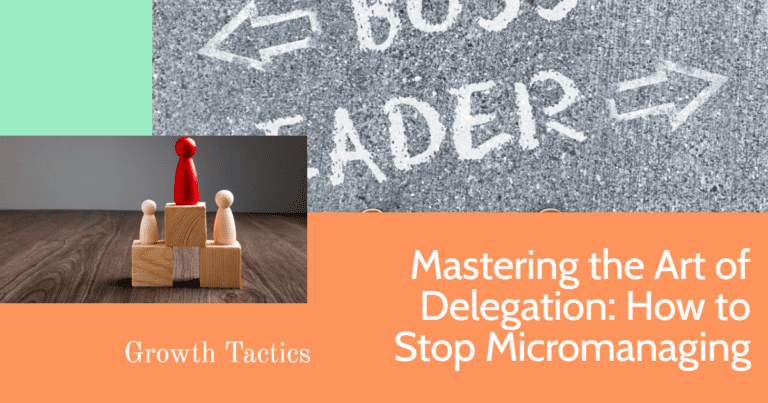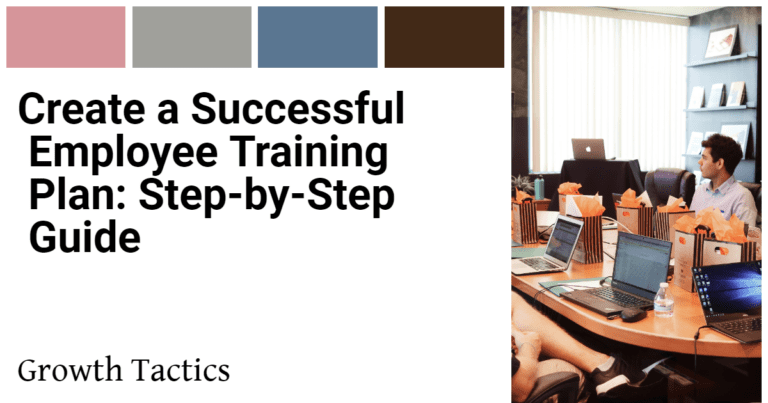In today’s fast-paced world, managing projects efficiently is more important than ever. Throughout my extensive career, having led numerous projects both big and small, I’ve learned that staying organized and keeping projects progressing steadily is crucial for success. One approach that has consistently stood out as a beacon of efficiency and adaptability is Agile Methodology.
What is Agile Methodology you may ask? This guide aims to demystify Agile Methodology for those new to the concept or looking to refine their project management skills. Embracing Agile has transformed how I approach project management, making processes smoother and more adaptable to change. Let’s dive into the world of Agile Methodology and explore how it can revolutionize your project management approach.
Jump To Section
Agile Methodology
Agile methodology is a project management approach that emphasizes iterative development, continuous improvement, and the ability to respond to change quickly. The agile approach is based on the Agile Manifesto, which was created in 2001 by a group of software developers who were looking for a better way to manage software development projects.
Agile methodology is based on a number of different frameworks, including Scrum and Kanban. Scrum is a popular agile framework that emphasizes teamwork, collaboration, and short development cycles. Kanban is another agile framework that focuses on visualizing work, limiting work in progress, and delivering work as it is needed.
The Four Pillars of Agile Methodology
Agile methodology is based on four pillars that guide the development process from start to finish. These pillars are individuals and interactions, working software, customer collaboration, and responding to change. Let’s take a closer look at each of these pillars.
Individuals and Interactions
The first pillar of agile methodology is individuals and interactions. This pillar emphasizes the importance of teamwork and collaboration in the development process. Agile development teams prioritize face-to-face communication and collaboration over processes and tools. By working together, team members can share ideas, solve problems, and produce better results.
Working Software
The second pillar of agile methodology is working software. This pillar emphasizes the importance of delivering working software to customers and stakeholders on a regular basis. Agile development teams prioritize the delivery of working software over comprehensive documentation. By delivering working software early and often, teams can get feedback from customers and stakeholders and make necessary changes quickly.
Customer Collaboration
The third pillar of agile methodology is customer collaboration. This pillar emphasizes the importance of involving customers and stakeholders in the development process. Agile development teams prioritize collaboration with customers over contract negotiation. By involving customers and stakeholders in the development process, teams can ensure that the final product meets their needs and expectations.
Responding to Change
The fourth pillar of agile methodology is responding to change. This pillar emphasizes the importance of being able to adapt to changing requirements and circumstances. Agile development teams prioritize responding to change over following a plan. By being able to respond quickly to change, teams can ensure that the final product meets the needs of customers and stakeholders.
Agile Project Management
Agile project management is a set of best practices that are used to manage software development projects using agile methodologies. The goal of agile project management is to help teams work more efficiently and effectively, with a focus on delivering high-quality software products.
The agile project management process is based on a number of different principles, including iterative development, continuous improvement, and the ability to respond to change quickly. Agile project management also involves working closely with stakeholders, including product owners and development teams, to ensure that everyone is aligned and working towards the same goals.
Benefits of Agile Methodology
Agile methodology has become increasingly popular in software development due to its numerous benefits. Here are some of the key benefits of using agile methodology:
1. Flexibility
Agile methodology is designed to be flexible and adaptable to changing requirements and circumstances. This means that development teams can respond quickly to changes in customer needs or market conditions, ensuring that the final product meets the needs of customers and stakeholders.
2. Collaboration
Agile methodologies emphasize collaboration and communication among team members. By working together, team members can share ideas, solve problems, and produce better results. This can lead to more satisfied customers and stakeholders.
3. Iterative Development
Agile methodologies use iterative development cycles, which means that development work is broken down into smaller, more manageable pieces. This allows teams to deliver working software on a regular basis, get feedback from customers and stakeholders, and make necessary changes quickly.
4. Continuous Improvement
Agile methodologies encourage continuous improvement throughout the development process. By regularly reflecting on the development process and making necessary changes, teams can ensure that they are delivering the best possible product to customers and stakeholders.
5. Customer Satisfaction
Agile methodologies prioritize customer satisfaction by delivering working software on a regular basis and involving customers and stakeholders in the development process. This ensures that the final product meets their needs and expectations.
6. Predictability
Agile methodologies provide greater predictability in the development process by breaking down development work into smaller, more manageable pieces. This allows teams to estimate the time and resources required for each piece of work, making it easier to plan and manage the development process.
The 12 Agile Principles
Agile methodology is based on a set of 12 principles that guide the development process from start to finish. These principles prioritize customer satisfaction, teamwork, and the ability to respond quickly to change. Let’s take a closer look at each of these principles.
- Customer satisfaction through early and continuous delivery of valuable software.
- Welcome changing requirements, even in late development. Agile processes harness change for the customer’s competitive advantage.
- Deliver working software frequently, with a preference for shorter timescales.
- Business people and developers must work together daily throughout the project.
- Build projects around motivated individuals. Give them the environment and support they need and trust them to get the job done.
- The most efficient and effective method of conveying information to and within a development team is face-to-face conversation.
- Working software is the primary measure of progress.
- Agile processes promote sustainable development. The sponsors, developers, and users should be able to maintain a constant pace indefinitely.
- Continuous attention to technical excellence and good design enhances agility.
- Simplicity–the art of maximizing the amount of work not done–is essential.
- The best architectures, requirements, and designs emerge from self-organizing teams.
- At regular intervals, the team reflects on how to become more effective, then tunes and adjusts its behavior accordingly.
Getting Started with Agile
Getting started with agile methodologies can seem overwhelming, especially if you are new to the concept. However, there are many resources available to help you get started and ensure that you are using agile methodologies effectively.
One popular approach to getting started with agile is to begin with Scrum and Kanban. Scrum is a popular agile framework that emphasizes teamwork, collaboration, and short development cycles. Kanban is another agile framework that focuses on visualizing work, limiting work in progress, and delivering work as it is needed.
Scrum
To get started with Scrum, you will need to form a development team and identify a product owner. The development team will be responsible for developing the software, while the product owner will be responsible for defining the product vision and prioritizing the product backlog.
Once you have formed your development team and identified your product owner, you can begin using Scrum to manage your software development project. Scrum involves working in short development cycles, called sprints, and holding daily scrum meetings to ensure that everyone is aligned and working towards the same goals.
Kanban
Kanban, on the other hand, focuses on visualizing work, limiting work in progress, and delivering work as it is needed. To get started with Kanban, you will need to create a Kanban board that visualizes your work and identifies the different stages of your development process.
Once you have created your Kanban board, you can begin using Kanban to manage your software development project. Kanban involves limiting work in progress and focusing on delivering work as it is needed, which can help you work more efficiently and effectively.
Agile Best Practices
Another approach to getting started with agile methodologies is to adopt agile best practices, such as iterative development, continuous improvement, and the ability to respond to change quickly. These best practices can help you work more efficiently and effectively, regardless of which agile framework you choose to use.
Iterative development involves breaking your software development project into smaller, more manageable pieces and working on each piece iteratively. This approach can help you work more efficiently and effectively, as you can focus on delivering high-quality software products in smaller, more manageable pieces.
Continuous improvement involves constantly evaluating and improving your development process, with a focus on delivering high-quality software products. This approach can help you identify areas for improvement and ensure that you are always working towards the highest possible standards.
Finally, working with an agile coach or consultant can be a great way to get started with agile methodologies and ensure that you are using them effectively. An agile coach or consultant can help you identify the best approach for your business and provide guidance and support as you implement agile methodologies in your organization.
Agile methodology steps
The following are the typical steps involved in implementing Agile methodology:
- Define the project vision and goals: The first step in implementing Agile methodology is to define the project vision and goals. This involves identifying the project’s purpose, objectives, and desired outcomes.
- Form the Agile team: Once the project vision and goals have been defined, the next step is to form the Agile team. The team should be cross-functional and self-organizing, with members representing different areas of expertise.
- Develop the product backlog: The product backlog is a prioritized list of features and requirements that need to be developed. The Agile team should work with the product owner to develop the product backlog.
- Plan the sprint: The sprint is a short development cycle, typically two to four weeks long. The Agile team should plan the sprint by selecting items from the product backlog and defining the tasks that need to be completed.
- Execute the sprint: During the sprint, the Agile team works on the tasks defined in the sprint plan. The team holds daily stand-up meetings to track progress and identify any issues that need to be addressed.
- Review and refine: At the end of the sprint, the Agile team reviews the work that was completed and refines the product backlog based on feedback. The team then begins the next sprint.
Implementing Agile methodology involves an ongoing process of continuous improvement and adaptation. The Agile team should be open to feedback and willing to make changes to improve the process and the product.
Agile Model Vs Waterfall Model
Agile methodology and Waterfall methodology are two popular project management approaches used in software development. The following are the key differences between the Agile model and the Waterfall model:
- Approach: The Agile model is an iterative and incremental approach, while the Waterfall model is a sequential approach.
- Flexibility: The Agile model is more flexible and adaptable to change, while the Waterfall model is less flexible and more rigid.
- Requirements: The Agile model allows for changing requirements throughout the development process, while the Waterfall model requires all requirements to be defined upfront.
- Timeframe: The Agile model works in short development cycles, while the Waterfall model works in longer development cycles.
- Testing: The Agile model emphasizes continuous testing throughout the development process, while the Waterfall model typically only tests at the end of the development cycle.
- Team structure: The Agile model uses a cross-functional team that works collaboratively, while the Waterfall model uses a more hierarchical team structure.
- Risk management: The Agile model prioritizes risk management and mitigation throughout the development process, while the Waterfall model typically only addresses risks at the end of the development cycle.
In the Agile model, development is broken down into short iterations, with each iteration delivering a working product increment. This approach allows for continuous feedback and adaptation, which can lead to a higher-quality product. The Agile model is also well-suited for projects with changing or evolving requirements.
In contrast, the Waterfall model is a sequential approach that follows a linear development cycle, with each stage of development completed before moving on to the next. This approach is well-suited for projects with well-defined requirements and a fixed scope.
In conclusion, both the Agile model and the Waterfall model have their advantages and disadvantages, and the choice between the two depends on the project’s specific requirements and constraints. The Agile model is more flexible and adaptable, while the Waterfall model is more structured and predictable. Ultimately, the choice between the two should be based on the project’s needs and goals.
Conclusion
Agile methodology is a project management approach that emphasizes flexibility, collaboration, and responsiveness to change. It is a popular approach to software development that has become increasingly popular in recent years.
By adopting agile methodologies, teams can work more efficiently and effectively, with a focus on delivering high-quality software products. If you are interested in adopting agile methodologies in your business, there are many different approaches you can take, including starting with Scrum and Kanban, adopting agile best practices, or working with an agile coach or consultant.
Did you enjoy this article on what is agile methodology? Don’t forget to share and subscribe.
Frequently Asked Questions (FAQ)
What is Agile Methodology?
Agile methodology is a project management approach that emphasizes iterative development, continuous improvement, and the ability to respond quickly to changes. It’s based on the Agile Manifesto, created in 2001 by a group of software developers seeking better ways to manage software development projects.
What are the main frameworks used in Agile Methodology?
The main frameworks used in Agile methodology are Scrum and Kanban. Scrum emphasizes teamwork, collaboration, and short development cycles, while Kanban focuses on visualizing work, limiting work in progress, and delivering work as needed.
What are the Four Pillars of Agile Methodology?
The Four Pillars of Agile Methodology are:
- Individuals and Interactions: Emphasizes teamwork and face-to-face communication.
- Working Software: Prioritizes regular delivery of working software.
- Customer Collaboration: Involves customers and stakeholders in the development process.
- Responding to Change: Focuses on adapting to changing requirements and circumstances.
How does Agile differ from the Waterfall model?
Unlike the Waterfall model, which follows a linear and sequential approach, Agile is iterative and flexible, allowing for continuous improvement and adaptation to changes throughout the project lifecycle.
What are the benefits of using Agile Methodology?
The key benefits of Agile Methodology include flexibility, enhanced collaboration, iterative development, continuous improvement, increased customer satisfaction, and greater predictability.
What are the 12 Agile Principles?
The 12 Agile Principles prioritize customer satisfaction, teamwork, and the ability to respond quickly to change. They include principles such as early and continuous delivery of valuable software, welcoming changing requirements, delivering working software frequently, and promoting sustainable development.
How can I get started with Agile Methodology?
To get started with Agile, you can begin with popular frameworks like Scrum and Kanban. Resources are available to help you form development teams, identify product owners, create Kanban boards, and adopt Agile best practices such as iterative development and continuous improvement.
What is Scrum?
Scrum is an Agile framework that emphasizes teamwork, collaboration, and working in short development cycles, called sprints. It involves forming a development team, identifying a product owner, and holding daily scrum meetings to ensure alignment and progress towards project goals.
What is Kanban?
Kanban is an Agile framework that focuses on visualizing work, limiting work in progress, and delivering work as needed. It involves creating a Kanban board to visualize work and identify different stages of the development process.








